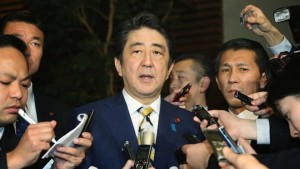Japanese Inflation Reports for February Show Nation Far Off Inflation Goals
 Statistics released by the Bank of Japan for the month of February show that, for a tenth consecutive month, the country experienced no net inflation. The reported lack of price increases comes despite massive efforts on the part of Japan’s central bank in the past several months. These efforts have been geared toward getting the Japanese economy to a two percent inflation rate, a rate of price increase that is generally accepted as a marker of a healthy economy.
Statistics released by the Bank of Japan for the month of February show that, for a tenth consecutive month, the country experienced no net inflation. The reported lack of price increases comes despite massive efforts on the part of Japan’s central bank in the past several months. These efforts have been geared toward getting the Japanese economy to a two percent inflation rate, a rate of price increase that is generally accepted as a marker of a healthy economy.
As part of these efforts to create nationwide inflation, the Bank of Japan, currently under the leadership of Bank Governor Haruhiko Kuroda, recently dropped its interest rates into negative numbers so as to stimulate investment and consumer spending. However, due to the rapid contraction of the Japanese economy, this appears not to have had any effect as of yet. Though Mr. Kuroda was clear at the time that the interest rates were lowered that doing so would not have an immediate effect, he projected that Japan would reach the targeted two percent inflation within a year, a time frame that some are now saying in unrealistic.
“It’s gradually becoming clearer that Kuroda won’t attain the price target as he projects,” said Japanese economist Shinichiro Kobayashi. Mr. Kobayashi is one of a pessimistic group of Japanese economic experts who believe that stimulating inflation may only be one part of the equation for Mr. Kuroda and the Bank of Japan. According to projections by Kobayashi and others, Japan will actually begin to experience deflation over the course of the next year, increasing the amount by which prices will have to rise in order to reach the annual 2 percent target goal. If Kobayashi’s predictions are accurate, the Japanese economy will only experience this deflation in certain sectors beginning sometime around the middle of the year.
Whether or not significant deflation occurs, Japan’s economic problems continue to become clearer and clearer. With the Japanese yen gradually strengthening, Japan’s exports to other countries have become more and more expensive. Meanwhile, a labor crisis caused by the country’s aging workforce, generous government retirement programs and a lack of younger population moving into existing jobs has threatened to cause long-term economic contraction in the once-prosperous nation.